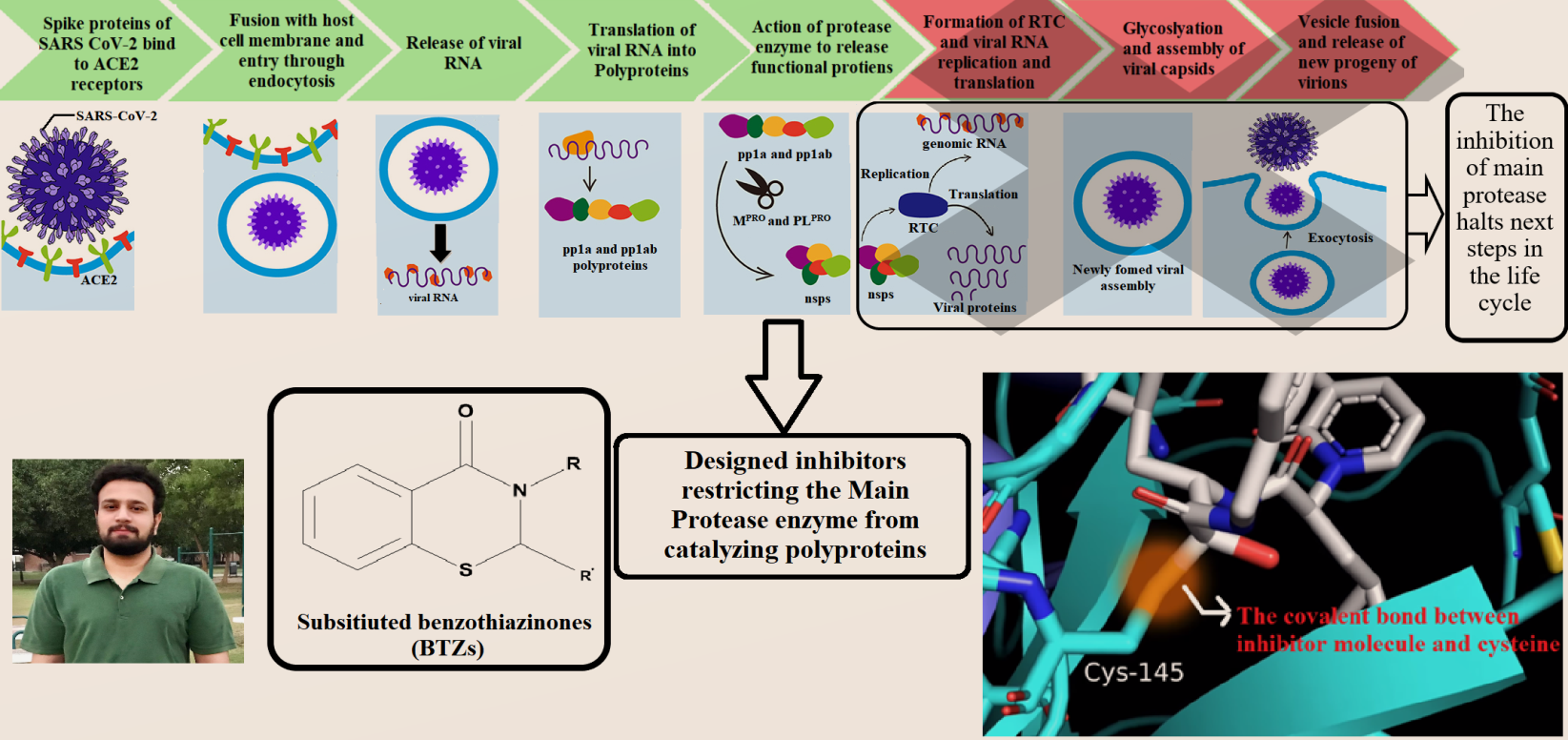
Event date:
May
21
2021
10:00 am
Synthesis and Anti-COVID-19 Evaluation of 1,3-Benzothiazinones (BTZs) derived from Schiff bases
Supervisor
Dr. Muhammad Saeed
Student
Abdul Rauf
Venue
Zoom Meetings (Online)
Event
MS Thesis defense
Abstract
COVID-19 has recently emerged as pandemic, and has taken the world in loop within a short time. With the first case being reported from Wuhan- a city located in the China’s Hubei province- in December 2019, the virus did not remain circumscribed. The virus was initially termed as “2019 Novel Corona Virus” (2019 nCoV), but due to the genetic resemblance to the Severe Acute Respiratory Syndrome (SARS) Coronavirus, it was named as “Severe Acute Respiratory Syndrome Coronavirus-2 (SARS-CoV-2)”. The newly-emerged disease originated by SARS CoV-2, the COVID-19, is considered to be related to the SARS (2003) and MERS (2012) outbreaks. Owing to the rapidly spreading disease, and concerns associated with it, the World Health Organization (WHO) announced the “COVID-19 a Global Emergency” on January 30, 2020 and later this outbreak was declared as a Pandemic on March 11, 2020 by WHO. According to the most recent data shared by WHO, the confirmed number as of May 12, 2021 is 159,319,384 and the death toll (global) is 3,311,780. In order to provide a therapeutical intervention to control the reproductive cycle of the virus, we aimed on targeting the main protease (MPro or 3CLPro) of SARS-CoV-2 (Figure 1). The molecule we have synthesized for screening the anti COVID-19 potential is 1,3-benzothiazin-4-one (BTZ). BTZ is an important pharmacophore and belongs to the bicyclic class of heterocycles containing a benzene ring fused to a thiazine-4-one skeleton. This class of compounds has a broad spectrum of biological activities such as anticancer, antibacterial and anti-inflammatory and antiviral activities against various pathogens including betaherpes virus, human cytomegalo virus (HCMV), HCV-6, HCV-7. In this project, 1,3-benzothiazin-4-one derivatives have been synthesized by coupling Schiff base derivatives with thiosalicylic acid; the Schiff bases, in turn, were synthesized using the condensation reaction between aromatic and aliphatic amines and aromatic carbonyl compounds by employing environmental friendly solvents like water and ethanol. Progress of the reaction was monitored through Thin Layer Chromatography (TLC), and characterization of the products were accomplished via spectroscopic methods including GC-MS, 1H-NMR, 13C-NMR. The BTZs and their Schiff base precursor will be tested to their inhibitory potential using an in-house biochemical assay of recombinant SARS-COV-2 main protease. The identified hits will be further optimized to a lead that could be used for the development of anti-COVID-19 therapeutics.
Meeting Link: https://lums-edu-pk.zoom.us/j/93320055066?pwd=ZDFWcnRkbTgzWTJiekhEcGxaa0dHZz09
Meeting ID: 933 2005 5066
Passcode: 021605

